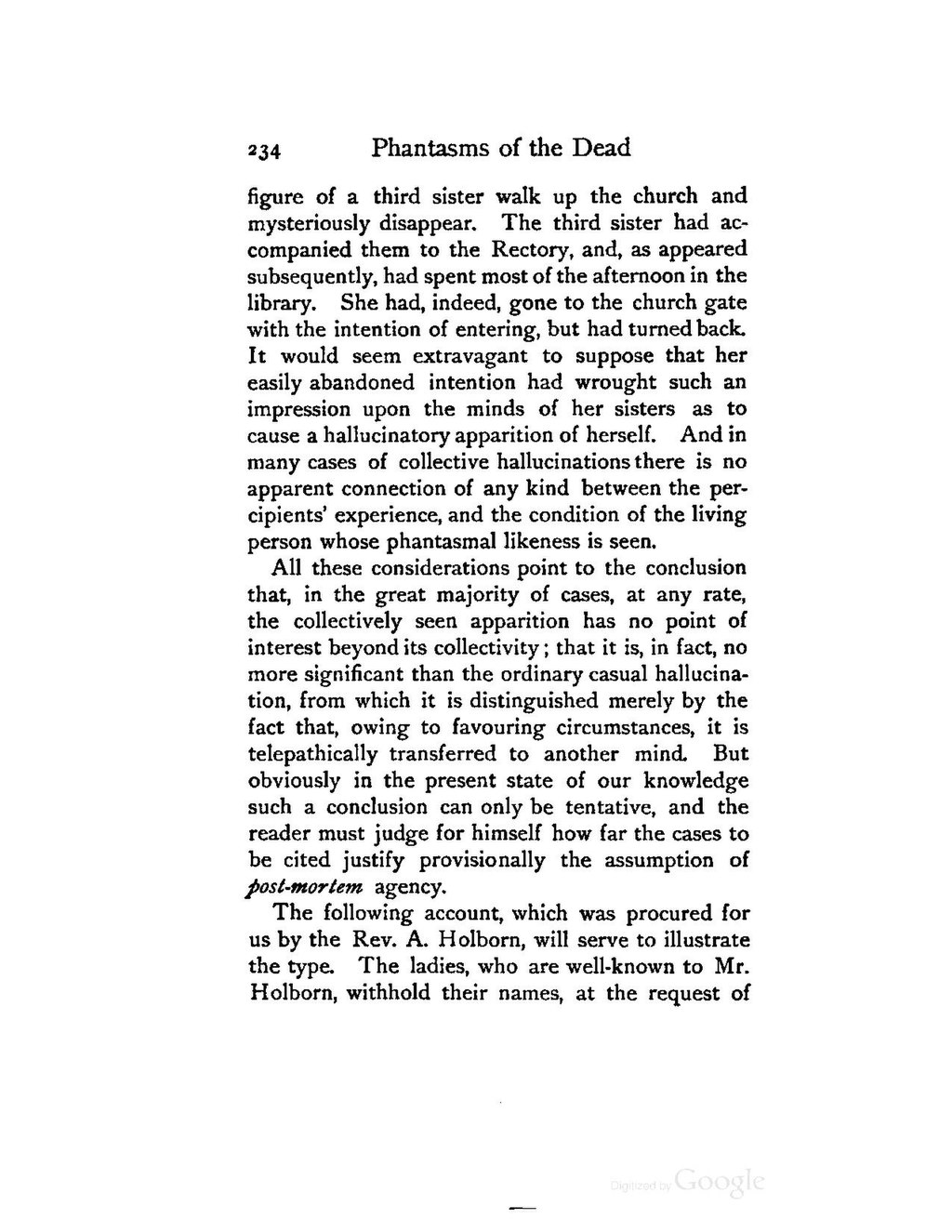figure of a third sister walk up the church and mysteriously disappear. The third sister had accompanied them to the Rectory, and, as appeared subsequently, had spent most of the afternoon in the library. She had, indeed, gone to the church gate with the intention of entering, but had turned back. It would seem extravagant to suppose that her easily abandoned intention had wrought such an impression upon the minds of her sisters as to cause a hallucinatory apparition of herself. And in many cases of collective hallucinations there is no apparent connection of any kind between the percipients' experience, and the condition of the living person whose phantasmal likeness is seen.
All these considerations point to the conclusion that, in the great majority of cases, at any rate, the collectively seen apparition has no point of interest beyond its collectivity; that it is, in fact, no more significant than the ordinary casual hallucination, from which it is distinguished merely by the fact that, owing to favouring circumstances, it is telepathically transferred to another mind. But obviously in the present state of our knowledge such a conclusion can only be tentative, and the reader must judge for himself how far the cases to be cited justify provisionally the assumption of post-mortem agency.
The following account, which was procured for us by the Rev. A. Holborn, will serve to illustrate the type. The ladies, who are well-known to Mr. Holborn, withhold their names, at the request of
